HISTORY OF THE ISLAND
According to Homer, Kefalonia and Ithaca used to compromise, along with Zakynthos, Lefkada and part of continental Acarnania the realm of the sea-fearing, resourceful, much afflicted Odysseus
. It is an endless apotheosis emerging from awesome panoramic images that have marked an intense historic course in the wake of ages.
The above islands experienced their highest peak of development during the Mycenean Period in terms of great cultural and social progress, while their inhabitants were becoming great seafarers following the example of daring Odysseus. Ithaca, the capital of the "Kefallenes" State is mentioned to in Homer's Iliad for the first time, a significant station of commerce both for Continental Greece and Corinth, was one of the most powerful states during this era.
During classical times Kefalonia was divided into four administrative units, today’s provinces of Krani, Sami, Pali and Pronni, which are called a “tetrapolis” (four –state) by the historian Thucidides.
These were the names of the four sons of the hero Kefalus, from whom Kefalonia was named after, according to the most prevalent opinion
.
During the Doric Period as well as throughout the historical years, there was a succession of wars, compelling the islands to be fortified by impressive castle walls. Eventually, Ithaca ceased to be the centre of power, and was attached to Kefalonia while, at the same time, a period of decadence followed which was continued – as it is also the case for the other islands in the Ionian – with the Roman domination, when became “part of an unofficial Roman protectorate in Western Greece”.
During the Byzantine Period intolerably heavy taxes were imposed on its inhabitants, while at the same time violent piratical raids were launched against the island. Years of conquest by various European races then ensued. Under the Normans, Kefalonia was appointed the islands administrative centre with the Byzantine Citadel of Saint George, today’s Castro (castle)
.
After Franc and Venetian occupations, the island was raided by the Turks, who caused huge disasters. The Venetian sovereignty characterized by intense class differences, which is a milestone of the island’s history commenced in 1500. From then until 1797 Kefalonia had been converted into a strategic nerve point for the Venetian fleet.
The capital was eventually transferred to Argostoli in 1757. The island would pass thenceforward to the republican French, who were welcomed by its inhabitants as liberators. Despite the conquests and the tempests they suffered, the islands would show a remarkable financial and intellectual development.
After the French who had modernized the islands administration, the territory passed successively to the Russian Turks. In 1809, British sovereignty commenced under the Swiss commander Philip de Bosset
.
The famous Drapanos stone bridge, which connects Argostoli to the opposite coast, was constructed in 1813. The treaty subjecting the islands to British protection under the name “The United States of the Ionian Islands” was signed in 1815.
The first public buildings and many infrastructure projects would be constructedunder the English governor Sir Charles Napier, who was the only one to remain in peoples memory as a friend of the Greeks. It was during that same period when Lord Byron visited Kefalonia as the representative and president of the Liberation Committee in Greece.
Cephalenes’ contribution to the Greek Revolution in 1821 is peak being the battle in Lala, was significant. Kefalonia along with the other Ionian islands was joined with the rest of Greece in 1864, after tremendous struggle and has since kept pace with the fate of the Greek State.
HISTORY OF KEFALONIA
Saturday, September 26, 2009
 KEFALONIA ISLAND GREECE, Greece
KEFALONIA ISLAND GREECE, Greece
Other Entries
-
85Thasos Coasts -Greece
Sep 0719 days prior THASOS ISLAND, Greecephoto_camera39videocam 0comment 1
THASOS ISLAND, Greecephoto_camera39videocam 0comment 1 -
86ARCHANGEL GABRIEL MONASTERY
Sep 0917 days prior THASOS ISLAND, Greecephoto_camera23videocam 0comment 3
THASOS ISLAND, Greecephoto_camera23videocam 0comment 3 -
87MIKROS PRINOS -(mountains) Thasos Island
Sep 1016 days prior MIKROS PRINOS, Greecephoto_camera28videocam 0comment 0
MIKROS PRINOS, Greecephoto_camera28videocam 0comment 0 -
88MIKROS PRINOS VILLAGE - (Island of Thasos)
Sep 1016 days prior Mikrós Prínos, Greecephoto_camera17videocam 0comment 0
Mikrós Prínos, Greecephoto_camera17videocam 0comment 0 -
89TRADITIONAL DISH FOR LUNCH
Sep 1016 days prior Mikrós Prínos, Greecephoto_camera6videocam 0comment 0
Mikrós Prínos, Greecephoto_camera6videocam 0comment 0 -
90DRIVING THROUGH KAVALA
Sep 1016 days prior Kavála, Greecephoto_camera18videocam 0comment 0
Kavála, Greecephoto_camera18videocam 0comment 0 -
91NEA KARVALI
Sep 1016 days prior NEA KARVALI, Greecephoto_camera6videocam 0comment 0
NEA KARVALI, Greecephoto_camera6videocam 0comment 0 -
92PSILI AMMOS BEACH - Thasos island Greece
Sep 1016 days prior Psilí Ámmos, Greecephoto_camera16videocam 0comment 0
Psilí Ámmos, Greecephoto_camera16videocam 0comment 0 -
93PANAGIA VILLAGE - (The Island of Thasos)
Sep 1115 days prior Skála Potamiás, Greecephoto_camera19videocam 0comment 0
Skála Potamiás, Greecephoto_camera19videocam 0comment 0 -
94A STROLL IN THE COAST OF SKALA POTAMIAS
Sep 1115 days prior Skála Potamiás, Greecephoto_camera16videocam 0comment 0
Skála Potamiás, Greecephoto_camera16videocam 0comment 0 -
95POTOS VILLAGE -THASOS
Sep 1214 days prior Potos (Thassos), Greecephoto_camera12videocam 0comment 1
Potos (Thassos), Greecephoto_camera12videocam 0comment 1 -
96POLICE PROHIBITION
Sep 1214 days prior KAMENA VOURLA , Greecephoto_camera10videocam 0comment 1
KAMENA VOURLA , Greecephoto_camera10videocam 0comment 1 -
97FLOODED AMARYNTHOS -EVIA GREECE
Sep 1214 days prior AMARINTHOS EVIA, Greecephoto_camera26videocam 0comment 2
AMARINTHOS EVIA, Greecephoto_camera26videocam 0comment 2 -
98OUR TRIP TO KEFALONIA ISLAND STARTS HERE!
Sep 242 days prior KEFALONIA -Ionian Sea, Greecephoto_camera8videocam 0comment 0
KEFALONIA -Ionian Sea, Greecephoto_camera8videocam 0comment 0 -
99FISCARDO -EAST COAST OF KEFALONIA ISLAND
Sep 251 day prior Fiskardo, Greecephoto_camera6videocam 0comment 4
Fiskardo, Greecephoto_camera6videocam 0comment 4 -
100MYRTOS BEACH - ASOS VILLAGE (Thasos Island)
Sep 251 day prior ASOS, Greecephoto_camera8videocam 0comment 1
ASOS, Greecephoto_camera8videocam 0comment 1 -
101KEFALONIA THE IONIAN GEM
Sep 251 day prior KEFALONIA ISLAND GREECE, Greecephoto_camera5videocam 0comment 0
KEFALONIA ISLAND GREECE, Greecephoto_camera5videocam 0comment 0 -
102HISTORY OF KEFALONIA
Sep 26 KEFALONIA ISLAND GREECE, Greecephoto_camera22videocam 0comment 0
KEFALONIA ISLAND GREECE, Greecephoto_camera22videocam 0comment 0 -
103CIVILIZATION OF KEFALONIA
Sep 26later that day KEFALONIA , Greecephoto_camera17videocam 0comment 0
KEFALONIA , Greecephoto_camera17videocam 0comment 0 -
104SCALA - POROS (Southern part of Kefalonia Island)
Sep 26later that day POROS , Greecephoto_camera5videocam 0comment 1
POROS , Greecephoto_camera5videocam 0comment 1 -
105LIXOURI - A Significan city in Kefalonia
Sep 26later that day LIXOURI , Greecephoto_camera5videocam 0comment 0
LIXOURI , Greecephoto_camera5videocam 0comment 0 -
106SAMI - AGIA EFIMIA (KEFALONIA ISLAND)
Sep 26later that day SAMI , Greecephoto_camera3videocam 0comment 0
SAMI , Greecephoto_camera3videocam 0comment 0 -
107THE FESTIVAL DAY AT THE ISLAND OF KEFALONIA
Sep 26later that day ARGOSTOLI , Greecephoto_camera11videocam 1comment 0
ARGOSTOLI , Greecephoto_camera11videocam 1comment 0 -
108MELISSANI - DROGARATI (Island of Kefalonia)
Sep 26later that day MELISSANI , Greecephoto_camera9videocam 0comment 0
MELISSANI , Greecephoto_camera9videocam 0comment 0 -
109ARGOSTOLI THE CAPITAL OF KEFALONIA-(wedding video)
Sep 26later that day ARGOSTOLI , Greecephoto_camera20videocam 1comment 2
ARGOSTOLI , Greecephoto_camera20videocam 1comment 2 -
110THE TRIP BACK HOME
Sep 271 day later KYLINI, Greecephoto_camera6videocam 0comment 1
KYLINI, Greecephoto_camera6videocam 0comment 1 -
111ENDING MY BLOG HERE!
Sep 304 days later EVIA, Greecephoto_camera22videocam 0comment 0
EVIA, Greecephoto_camera22videocam 0comment 0

 KEFALONIA ISLAND GREECE, Greece
KEFALONIA ISLAND GREECE, Greece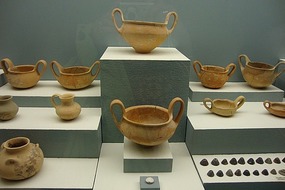
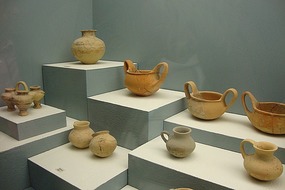
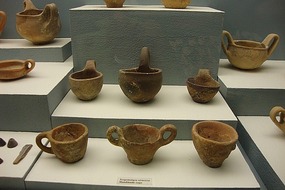
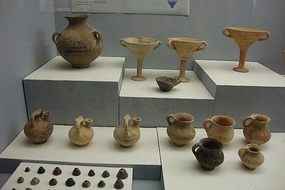


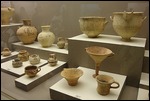
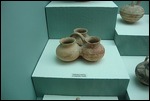
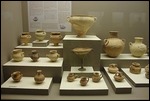
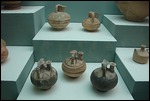
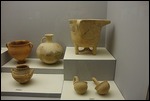
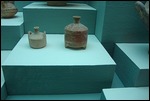
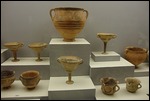
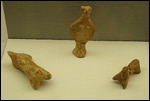
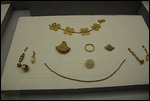
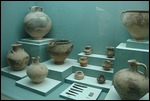

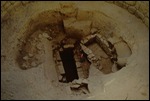
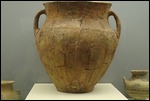

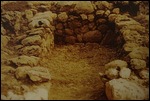

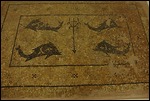
2025-05-22